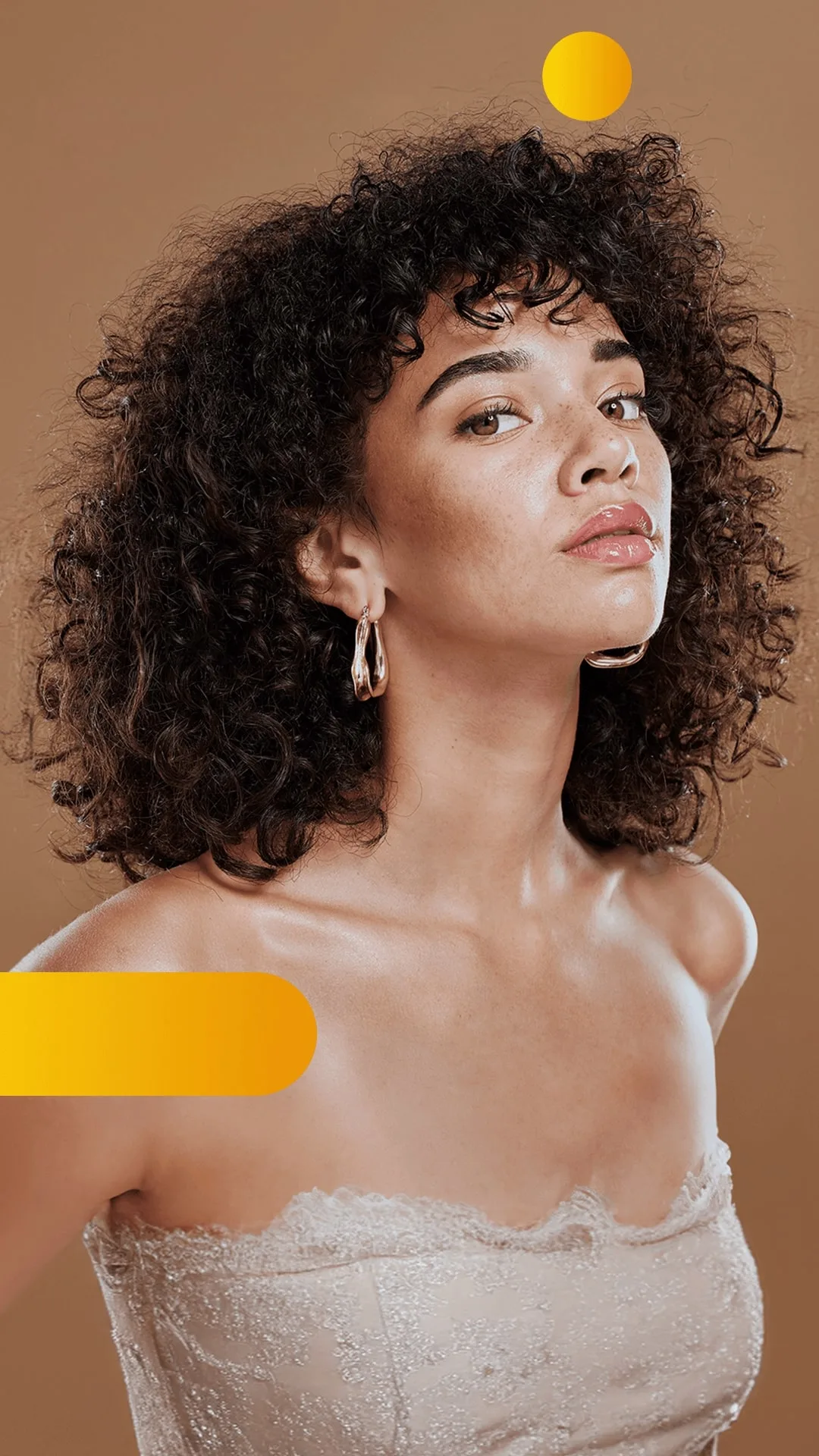Everyone talks about straight, curly, frizzy and wavy hair. But to really want to understand your hair we're going to get down and detailed.
So, what's your hair type?
Andrew Walker, several Daytime Emmy Award winner for his Hairstyling work on the Oprah Winfrey Show, developed a hair type chart. Walker created classifications using numbers and letters: Numbers identify the type of your hair, letters tell you more about its characteristics. For example, 4C hair feels and behaves differently than 3A hair.
Read on to discover more about the very different hair types out there and where yours fits. You can also take the HAIRCODE Hair Type Quiz to get a scientific debrief about your hair type.
Type 1: Straight hair
Type 1 – straight – hair lies flat on the scalp. It's what we all tried to achieve with straighteners back in 2006. Since hair oils travel easily from the scalp to the ends, it generally becomes greasier more quickly.
Type 1A hair is the rarest of them all. Straight as a pin and can be prone to greasiness. It can be difficult to style, is extremely fine and it does not hold a curl.
Type 1B hair is thicker than 1A. With a little more volume, there's more texture to play with when styling.
Type 1C hair is straight, thick and coarse - a triple threat for frizz. But if you live in a humid environment, you can easily achieve beachy waves by simply air-drying your hair.
Type 2: Wavy hair
Getting a little more playful, Type 2 wavy hair is usually defined by its large waves and gentle curls - that "S" shape - which are often described as "beach waves." Usually, it doesn't get as oily a fast as Type 1.
Type 2A hair is fine, thin, and soaks up moisture easily. These waves make it a cinch to experiment with, using styling tools and products.
Type 2B hair is very similar to type 2A, but it's slightly coarser and denser. It's also more prone to frizz and tends to hold its shape better than type 2A.
Type 2C hair has deep waves that start at the scalp (think Shakira). Coarser than 2A and 2B, it's got some great definition when wet.
Type 3: Curly hair
Type 3 (curly) hair has great texture, but is prone to dryness and frizz. With its natural bend or curl, it can be easily identified by its fullness, versatility, and springy spirit.
Type 3A hair is fine and full of volume, with a curl pattern that ranges from loose to tight and is prone to a little frizz. Curls tend to be large and defined, while waves are soft and wispy.
Type 3B hair has a thick and curly texture that has small to medium-sized curls. The hair shaft is typically dense and coiled, with a medium-to-high porosity.
Type 3C is textured, tight and thick. A terrific, triple threat of tresses.
Type 4: Coily hair
Type 4 hair is often referred to as a "tight curly" pattern you see when someone has stunning afro hair! The curls are tightly coiled and small in size, making them appear close together on the head. Type 4 hair has a tendency to shrink up during styling, but it's also the most fragile type of hair. Natural oils don't travel down the shaft too easily, so the threat of dryness is real!
Type 4A hair has the most shrinkage and elasticity. The curls are very tight and small, which makes the hair shrink up to 70% when it dries. The curl pattern is more of an S than other hair types, which is where it gets its shrink-factor from.
Type 4B hair does not have a clearly defined curl pattern. Its tight coils form a "Z" shape and resemble zigzags with sharp angles, making this hair type extremely prone to dryness.
Type 4C is the most fragile of all textures, with strands that are tightly-coiled and zig-zaggy. It shrinks the most — about 75 percent or more — than the other textures.
Your hair type matters
Knowing your hair means knowing how to keep it healthy and looking fab. Let's face it, we want it to look amazing - understanding it is the first step in taking care of it.
Regardless of the type of hair, everyone has a concern that needs to be taken care of. We will help you choose the right hair care products according to your hair type and the problem you are struggling with. Take the Hair Type Quiz now and get a personalized list of products that are just for you!
